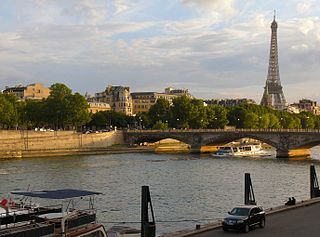From Guest Blogger Jamie Best: Turbine & Towers — Liberté, Égalité, Sustainabilité

In 2014, the first floor of the tower was redeveloped, improving accessibility with a reception and conference rooms, visitor centre, restaurants, museum, pavilions, shops and even a glass floor. As part of this, solar panels, rainwater catchment, LED lighting and other sustainable technology was being incorporated into the Parisian tourist attraction.
In 2015, its environmentally friendly improvements continued with the installation of two vertical-axis wind turbines, in a position that fully maximised wind capture on the tower’s second level. The iconic structure posed some unique challenges, with each blade having to be hoisted by hand and pulley up to the second floor and secured into the tower’s lattice structure.
The 17-foot turbines, painted to blend in with the tower, provide enough electricity to power the tower’s first-floor commercial areas; about 10,000 kWh per year. Extra vibration dampeners were added to ensure that diners in the Jules Verne restaurant below weren’t disturbed.
With buildings as significant as the Eifel Tower making sustainability changes, we’ll hopefully see more and more people taking sustainability into account throughout the design process. But the road to sustainability isn’t always easy, with so many options out there it can be difficult to know which option is best suited to your needs.
When assessing the best option for creating renewable energy in the Eifel Tower, there was debate about what would be more effective; solar panels or wind turbines? Given the gusts that whistle around the tower, turbines seemed best suited, especially since solar panels would have required more space and affected the look and design of the famous landmark a lot more. A perfect example of how the right sustainable technology can work seamlessly with a building or structure.
Of course, the sustainability changes to the world’s most famous tower have proved to be a pricey affair, taking two years and costing €30 million, but similar changes are both affordable and practical when considered on a smaller scale. Whatever your budget, sustainable building consultants can help you to find the right sustainability solution for your building or property.
The fact that such a recognisable and famous landmark has chosen to commit to a more sustainable future should inspire more of us to do the same. Though the Eifel Tower is a large scale project, similar sustainable changes can be quite easily incorporated into the modern design of smaller residential and commercial buildings. From simple LED lights to complex rainwater collection systems or even solar panels and wind turbines, there are endless ways to reduce your carbon footprint. Even the most simple of changes can have a positive effect and no change is too small.
Author Bio:
Jamie Best, Director & Business Development Manager at Melin Consultants; the sustainable building consultants who specialise in Part L of the building regulations, providing BREEAM calculations, air tightness testing and other sustainability assessments.

Sustainable and higher-efficiency retro-fitting is key to the move forward. France has chosen wisely with such a globally recognized landmark. Let’s hope the PR value has a measurable affect as well.
It’s a good starting point, Cameron. Hopefully other cities will follow suit!